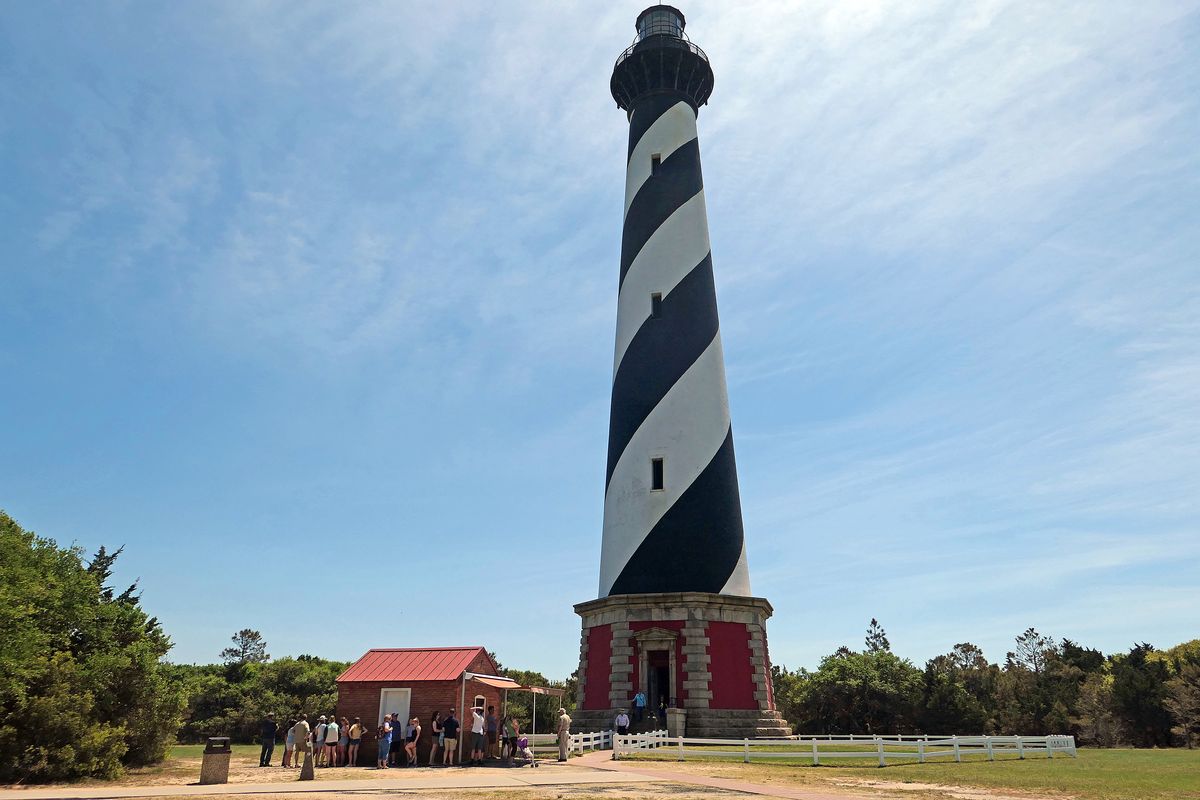Admiring the Outer Banks

OCRACOKE ISLAND, N.C. -- On the Outer Banks, we sometimes felt like we were looking at a mirror image of the Pacific Northwest.
Being a mirror, everything was opposite. Instead of gorgeous Pacific sunsets, we got gorgeous Atlantic sunrises. And instead of salmon, we got a fish called drum, also mighty tasty.
So delving into the North Carolina coast felt a bit like visiting an alternate universe.
Example: Getting to the Outer Banks required us to catch a ferry, something we’ve done a million times in the Northwest. Then, when we pulled our RV onto Ocracoke Island, it felt a lot like being in Washington’s San Juan Islands, with the same laid-back vibe and cute shops.
Here we were, 2,800 miles from Spokane, discovering a charming, almost-like-home refuge that felt so comfortable we didn’t want to leave.
National seashore
The Outer Banks are a skinny 200-mile-long set of barrier islands off the east coast of North Carolina. Our favorite parts of the islands fell within the Cape Hatteras National Seashore, part of the national parks system.
We camped on Ocracoke Island for four days, where we rode our bikes, walked on the beach and simply enjoyed hanging out.
You’d never know today that Ocracoke Island had a violent past. In the 1700s, pirates regularly attacked merchant ships bound for the American colonies in these waters. Blackbeard, the most famous of them, eventually met his match near Ocracoke when he was captured and beheaded.
During the Civil War, Confederate Fort Ocracoke stood sentinel in the shallow waters off the island, and eventually burned when Union troops attacked the Outer Banks. And in World War II, German U-boats hunted troop ships off the coast, sinking several.
Today, the beaches of Ocracoke remain unbelievably beautiful. The Gulf Stream waters that brush up against the Outer Banks bring exotic sea shells, and you can frequently see dolphins swimming along the coast.
We often found ourselves alone on the beach, with nothing but miles of sand and sea in the distance.
Wright Brothers, ‘Lost Colony’
The Outer Banks continue north toward Virginia and we traveled onward, staying in the national park campground at Oregon Inlet. At first we were disappointed by the more developed northern section of the Outer Banks as we passed an increasing number of strip malls.
Once again, we were rescued by our national parks system.
We visited the Wright Brothers National Memorial in Kitty Hawk, N.C., to take in the excellent display explaining how Orville and Wilbur created the first airplane.
Then we headed on to Fort Raleigh National Historic Site, to learn about the first British colonists to come to America. The site tells the remarkable story of the “Lost Colony” of settlers who in 1587 came to Roanoke Island, predating the Plymouth Rock pilgrims by more than 30 years.
Schoolchildren wouldn’t be drawing pictures of the Mayflower every Thanksgiving if the Roanoke Island settlers had flourished. Instead, they disappeared, spawning a centuries-old mystery about what happened to them.
The two exhibits told us a lot about the history-filled Outer Banks, a place we loved hanging out. On our final night, we ate some fine North Carolina shrimp, a long way from the Pacific Northwest, but feeling at home inside our RV.
This week’s Going Mobile question
Have you ever traveled to the national parks in South Dakota? We're considering hitting Mount Rushmore and Badlands on our journey back to the Northwest, and would love some advice on what not to miss.
